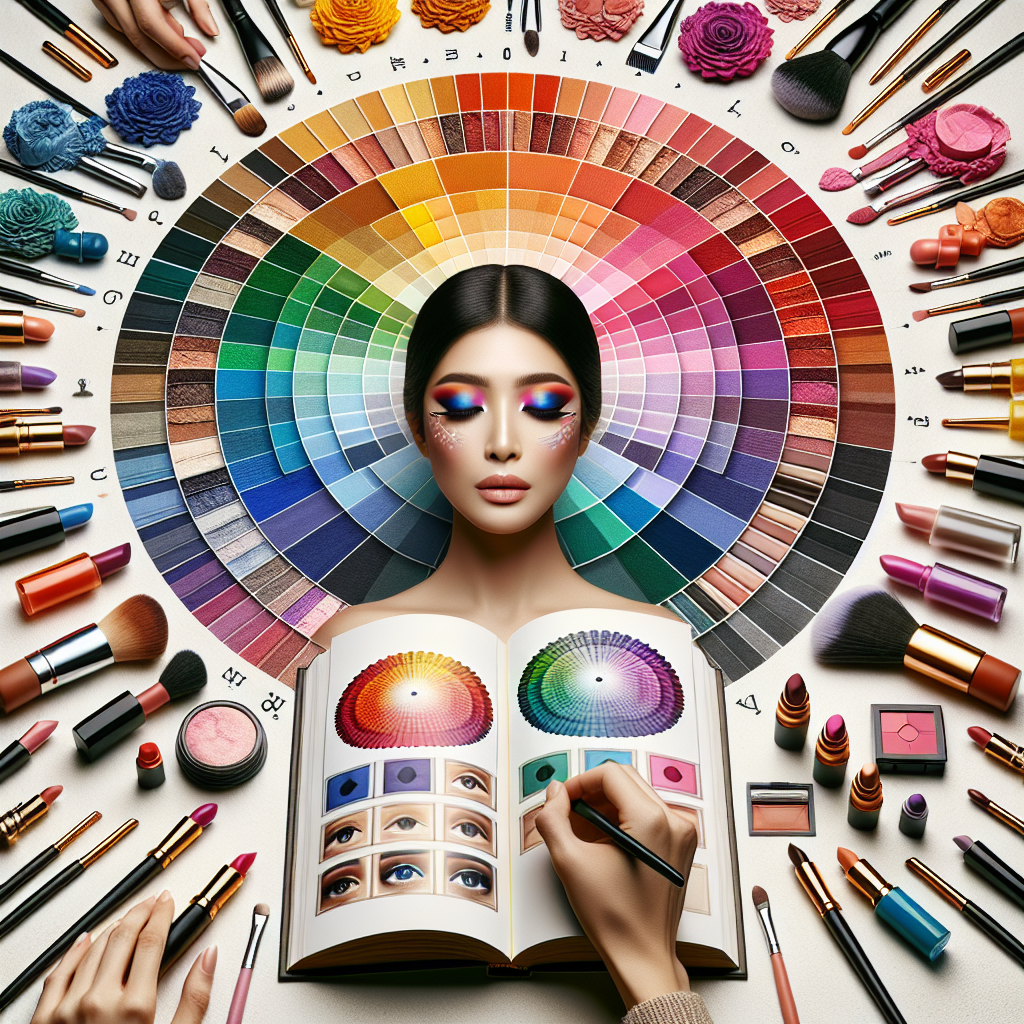Introduction to Color Theory
Color theory is an essential aspect of art and design that plays a significant role in makeup artistry. Understanding color relationships, mixing pigments, and recognizing undertones can enhance a makeup artist’s skillset, allowing them to create stunning looks that complement various skin tones and facial features.
The Color Wheel
The foundation of color theory is the color wheel, which organizes colors into primary, secondary, and tertiary colors.
Primary Colors
The primary colors are red, blue, and yellow. These colors cannot be created by mixing other colors and serve as the building blocks for all other colors.
Secondary Colors
Secondary colors are created by mixing two primary colors. For example:
- Red + Yellow = Orange
- Blue + Yellow = Green
- Red + Blue = Purple
Tertiary Colors
Tertiary colors result from mixing a primary color with a secondary color, producing hues like red-orange or blue-green.
Understanding Color Terminology
Hue
Hue refers to the name of a color—what we commonly call “red,” “blue,” or “green.”
Saturation
Saturation describes the intensity or purity of a color. A highly saturated color appears vivid, while a less saturated color looks more muted.
Value
Value refers to how light or dark a color is, which affects the overall depth of a makeup look.
Color Harmony
Color harmony is a principle that involves the combination of colors in a pleasing way. Here are some common color harmony techniques used in makeup:
Complementary Colors
Complementary colors are located directly opposite one another on the color wheel. For makeup, using complementary colors can create striking contrasts that make features pop. For example, pairing purple eyeshadow with a yellow outfit.
Analogous Colors
Analogous colors are neighboring colors on the color wheel. Using these colors can create a more cohesive and softer look, ideal for natural makeup.
Triadic Colors
Triadic color schemes involve three colors evenly spaced around the color wheel. This approach can produce vibrant and balanced looks.
Skin Undertones and Color Matching
Understanding skin undertones is crucial for selecting the right foundation, blush, and lip colors. There are three main undertones:
Cool Undertones
Individuals with cool undertones typically have pink, red, or blue hues in their skin. Suitable makeup colors include blue-based reds and jewel tones.
Warm Undertones
Warm undertones feature yellow, peach, or golden hues. For these individuals, orange-based lip colors and earth tones look best.
Neutral Undertones
Neutral undertones fall between cool and warm and can wear a wider variety of colors. Balanced shades work well for them.
Color Mixing Techniques
Makeup artists often blend colors to achieve desired shades and effects. Here are some tips for effective color mixing:
Layering
Applying multiple thin layers of color can help achieve depth and dimension without overwhelming the base.
Color Correction
Color correctors can neutralize unwanted tones. For instance, green cancels out redness, while peach can cover blue undertones.
Conclusion
Mastering color theory can significantly elevate a makeup artist’s capability. By understanding the intricacies of the color wheel, color harmony, and skin undertones, artists can create flawless and breathtaking makeup looks tailored to each client. Whether working on glamorous evening styles or everyday wear, the strategic use of color will always augment your artistry.

